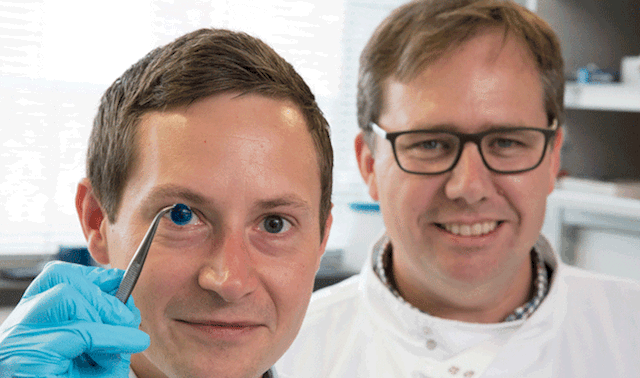
In a latest study from Newcastle University, UK, scientists report that they have created the first 3D-printed human corneas in world.
This could be a new hope for people suffering from blindness.
Cornea is the eye’s outermost layer. It is the clear, domeshaped surface that covers the front of the eye and plays an important function in focusing vision.
Injuries to the eyes or allergies may cause corneas diseases. When corneas cannot function well, a person’s vision will be greatly damaged.
Currently the treatments for serious cornea diseases include laser surgery and corneal transplant surgery.
One disadvantage of corneal transplant surgery is that the donated tissues often limited, and patients have to wait for a long time.
Research data shows that currently worldwide 15 million people suffer from corneal vision loss and need surgery to prevent blindness.
The 3D-printed human corneas mean in the future there can be an unlimited supply of corneas.
In the study, the researchers used a simple low-cost 3D bio-printer to make human corneas. The bio-ink was successfully extruded in concentric circles to form the shape of a human cornea.
Amazingly, the whole 3D- printing process only took less than 10 minutes.
The unique bio-ink is made from a mixture of stem cells (human corneal stromal cells) from a healthy donor cornea and alginate as well as collagen.
It can keep the stem cells alive while producing a special material that can hold the shape and be squeezed out a 3D printer.
What is more, the 3D-printing technique can make personalized corneas that match a patient’s eye shape and size if the scan data of the patient’s eye is available.
The researchers said “this builds upon our previous work in which we kept cells alive for weeks at room temperature within a similar hydrogel.
Now we have a ready to use bio-ink containing stem cells allowing users to start printing tissues without having to worry about growing the cells separately”
“Our 3D printed corneas will now have to undergo further testing and it will be several years before we could be in the position where we are using them for transplants.
“However, what we have shown is that it is feasible to print corneas using coordinates taken from a patient eye and that this approach has potential to combat the world-wide shortage.”
The study is published in Experimental Eye Research.
Here is a video about the research:
Copyright © 2018 Knowridge Science Report. All rights reserved.



